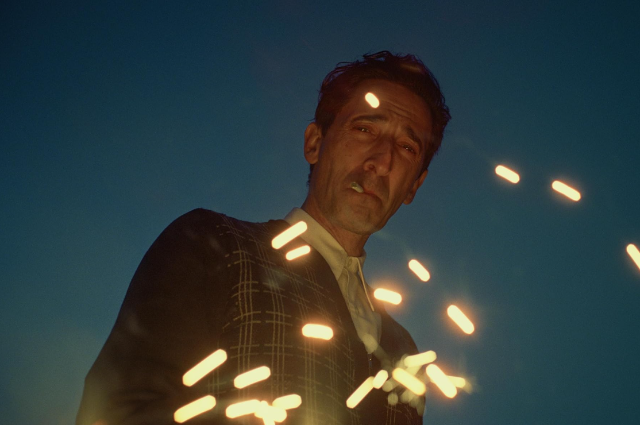Brady Corbet’s The Brutalist is not just a story about an architect—it’s a portrait of the immigrant experience, framed by loss, ambition, and the quiet cruelty of systemic exclusion. Set in post-World War II America, the film follows László Toth, a Hungarian Jewish architect who arrives with dreams of shaping skylines but soon finds himself constrained by a society that values his labor more than his presence. His struggle—fighting for recognition in a world that sees him as an outsider—feels hauntingly familiar in today’s political landscape.
With Donald Trump’s latest immigration policies aiming to curtail legal pathways, expand detention facilities, and enforce mass deportations, The Brutalist resonates as more than a historical drama—it serves as a reflection of America’s present and a warning for its future.
A Dream Deferred: Then and Now
László comes to America seeking opportunity, only to encounter a system that places endless obstacles in his way. Today, that same system is tightening its grip. The Reforming American Immigration for a Strong Economy (RAISE) Act, a bill backed by Trump, proposes slashing legal immigration by 50%, restricting family-based sponsorships, and capping refugee admissions at just 50,000 per year.
For modern-day Lászlós—immigrants with talent and ambition but no immediate wealth or elite sponsorship—this shift turns the American Dream into an increasingly distant fantasy. Much like the film’s protagonist, many immigrants today find themselves unwanted, their contributions overlooked, and their futures uncertain.
The Price of Labor: Exploitation Behind the Facade
One of The Brutalist’s most unsettling themes is the way László’s genius is exploited. He is allowed to work, but never to rise. His employers take ownership of his creations, erasing his identity while profiting from his talent.
This echoes a grim reality in modern America. While Trump has positioned himself as a hardliner on immigration, his policies have expanded immigrant detention centers, which are increasingly privatized and profit-driven. The Guantanamo Migrant Operations Center, originally meant for temporary housing, is now being expanded to hold up to 30,000 detainees—a stark reminder that America’s treatment of immigrants is often more about control than opportunity.
A Nation of Many or One? The Erasure of Identity
László’s struggle in The Brutalist is not just professional—it’s personal. He must navigate a country that demands assimilation, where maintaining his cultural roots is seen as an obstacle rather than an asset. Today, that same expectation is becoming institutionalized.
Trump’s proposed executive order to declare English the official language of the U.S. would reinforce an exclusionary message: that America is no longer a country where different cultures can coexist, but one where non-English speakers are seen as outsiders, regardless of their contributions.
The Weight of Displacement: A Never-Ending Cycle
Perhaps the most profound emotional arc in The Brutalist is László’s slow realization that his sacrifices may never be enough. He fights for a home in a country that refuses to see him as one of its own.
This fear is no longer cinematic—it is real. Trump’s proposed mass deportation plan, aiming to expel between 15 and 20 million undocumented immigrants, is the most extreme in modern history. Families that have spent decades building lives in America now live under the constant threat of removal, their futures dictated by shifting policies rather than their own efforts.
A Story That Refuses to Fade
At first glance, The Brutalist appears to be a historical drama, but it lingers as something far more contemporary. The film’s exploration of exclusion, power, and identity loss is not confined to the past—it is being written into policy today.
László’s America, with its broken promises and silent barriers, is still the America that millions of immigrants wake up to each day. The Brutalist does not just tell their story—it reminds us that history has a way of repeating itself.

